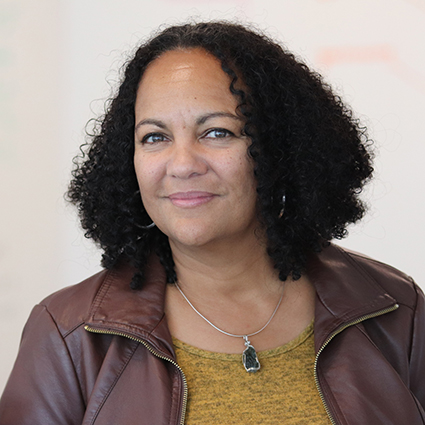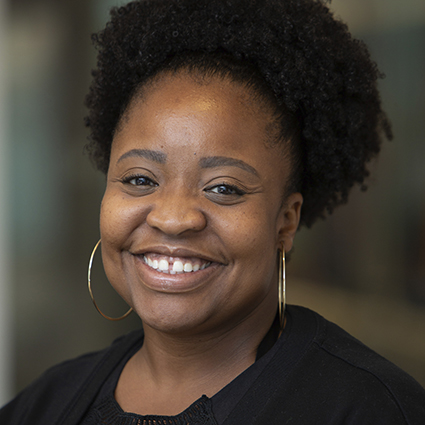 A kindergartner listens intently at Liberty Elementary in 2018. The shift to distance learning during the COVID-19 pandemic has been difficult for everyone, but lower-income families are facing even more daunting barriers that experts say could widen the achievement gap.
A kindergartner listens intently at Liberty Elementary in 2018. The shift to distance learning during the COVID-19 pandemic has been difficult for everyone, but lower-income families are facing even more daunting barriers that experts say could widen the achievement gap.By Matthew Hansen, Managing Editor
You can hear it in Dorothy’s voice, understand even before she explains what it’s like to juggle the distance learning of her four children, her job as a janitor, her disappearing income, and a global pandemic.
She sounds bone-tired. She sounds frustrated.
She feels like she is juggling fire, and she’s afraid she will drop it.
“My muscles ache,” she says. “I constantly feel like I should be over there doing this, and instead I’m over there doing that…
“I feel like I’m lost,” she says. “I stand in the store sometimes, and I forget why I’m there. I don’t know what to do with myself. I don’t know what to do with my children. I feel, constantly, like I should be doing something more for my kids and their education.”
 Lisa Roy, director of program development at the Buffett Institute
Lisa Roy, director of program development at the Buffett InstituteNearly everyone can relate to the stress caused by COVID-19. Every Nebraska parent knows the struggle of balancing work with children at home, trying to learn online, after schools closed this March.
But families with lower income are facing daunting barriers as they attempt to navigate this new educational reality, say Buffett Early Childhood Institute experts, area educators, and families.
Hunger is a barrier. Nearly one in five young children aren’t getting enough food during the pandemic, according to a national study. Technology is another. Lower-income families rarely have enough internet-connected computers and tablets for each child. Some have no connectivity at all.
And numerous educational barriers pile atop these. How do mom or dad help a child with school if the parent doesn’t speak English? How do they help if the parent struggles to read or do math?
And how do Dorothy and her husband, who must leave the house each workday to do jobs they can’t do on Zoom calls, juggle this with home schooling?
Experts warn that these barriers will widen the achievement gap between students from affluent families and students from low-income households. And they say that school districts, cities, and states must be better prepared if distance learning is needed again this fall.
“There’s no way around it: When you are less resourced, you are more exposed to COVID-19, more stressed, more vulnerable,” says Lisa Roy, the Buffett Institute’s director of program development. “We’ve been reacting this spring. But we have to be and will be more proactive this summer and fall.”
Paige Joerger, a teacher at Omaha’s Gomez Heritage Elementary, until recently believed that this year’s second grade class is the best she has had.
Now: “Am I worried some are hungry? Yes,” she says.
Until March, many of her second graders got breakfast when they walked into school, regular school lunch, and then an after-school meal before leaving Gomez in the late afternoon.
Omaha Public Schools, and other area school districts, have provided tens of thousands of meals to families, Joerger says, doing much to quell hunger. But she is worried the aid isn’t reaching every student who needs it. Joerger has spent ample time doing “social services type of work” to try to guarantee her second graders’ safety and health.
“Of course it’s affecting how some children are learning,” she says.
 Ilka Oberst, Liberty Elementary principal
Ilka Oberst, Liberty Elementary principalTechnology may be the highest hurdle for Liberty Elementary students and families, says Ilka Oberst, Liberty’s principal.
Most have only one or two devices that connect to the internet, she says. Often this is a parents’ phone, meaning young students often lose their access to distance education when Mom or Dad goes to work.
In Dorothy’s family, the four children are sharing one tablet connected to the internet, and supplementing that by using their parents’ smartphones. This often leaves two or three children unable to access coursework or ask their teacher a question for long stretches of time.
Schools, including the Omaha Public Schools system, are trying to meet this need with massive purchases of tablets they plan to distribute to all students. Getting an iPad in every student’s hands will greatly help lower-income families, experts say, but they caution that other technology gaps could persist.
Reliable wireless internet is a must. So is tech support, so parents can help their young children understand the various tools that schools are using to teach via distance education.
“How do we bring parents up to speed to navigate those devices? How do we support them? That’s something we still are figuring out,” says Keeley Bibins, a Buffett Institute educational facilitator who works closely with two schools attended by many students living in poverty.
Bibins, who has twin kindergartners with special needs, has also been helping dozens of families in her neighborhood teach their children in the past few weeks. These are families struggling to juggle work, school, and the pandemic, she says. Many parents are unfamiliar with the new way that schools teach math. Some are struggling with recent layoffs, rent payments, food shortages.
“I’m trying to take what I know about the neighborhood and the education and the culture, and help that way,” she says.
Dorothy, the mother of four children, including a second grader at Gomez Elementary, is most worried about her family’s ability to do that same education-work-pandemic juggling act.
Her husband must go to work onsite each day. She works the night shift cleaning office buildings, which means she’s home during the day but hoping to sleep, not help with homework. When office buildings are closed, Dorothy gets fewer hours. That’s good for being home more, but dangerous for the family checking account.
 Keeley Bibins, educational facilitator at the Buffett Institute
Keeley Bibins, educational facilitator at the Buffett InstituteHer kids seem adrift, aimless, she says. Her second grader, a student in Paige Joerger’s class, is showing increasing signs of anxiety and anger.
“The other day she said, ‘This is too much, Mom,’” Dorothy tells me. “She said, ‘I want to read but I have no friends to read with. I want to show people I can write, but there is nobody to show.’”
Educators and experts expect most students to show educational losses next school year. Those losses will likely be especially acute for students in the lowest income brackets, they say. They also expect many students to have experienced trauma by the time they return to school. Again, these traumatic events will disproportionately hit students of lower income.
Even COVID-19, a virus that by its nature doesn’t discriminate, is hitting low-income Americans and people of color harder for many reasons, including holding jobs in manufacturing and food processing that often force workers out of the home and into crowded work spaces where the virus can easily spread.
“I know a couple of kids who have lost grandparents already,” Oberst says quietly. “We are going to have a lot to do when we come back.”
It presents a daunting educational challenge, but the Buffett Institute’s Lisa Roy thinks that both school districts and Institute experts will be more prepared when schools comes back into session this fall—even if school is totally or partly online.
If students have to learn via distance education again this fall, there needs to be teacher training that readies and supports teachers unfamiliar with distance learning as they prepare to teach in this new way, Roy says.
School districts and related groups like the Institute will need to use testing and other data to build personalized instruction plans for students—hard work that could help close the achievement gap.
And experts can help bring teachers and families closer together. A stronger parent-teacher bond builds trust and makes distance learning easier.
“Nationally and locally, parents have a deeper appreciation of teachers, and teachers have a deeper appreciation for parents,” Roy says. For her, the question is “how do we take advantage of this opportunity, so teachers and parents can work more as partners moving forward? I see us working on this.”
Matthew Hansen, the managing editor of the Buffett Early Childhood Institute at the University of Nebraska, is an award-winning journalist tasked with telling the stories of the Institute's work and early childhood care and education in Nebraska and beyond.
His columns can be read at https://buffettinstitute.nebraska.edu/news-and-events/early-years-matter.